Emotions & feelings in children
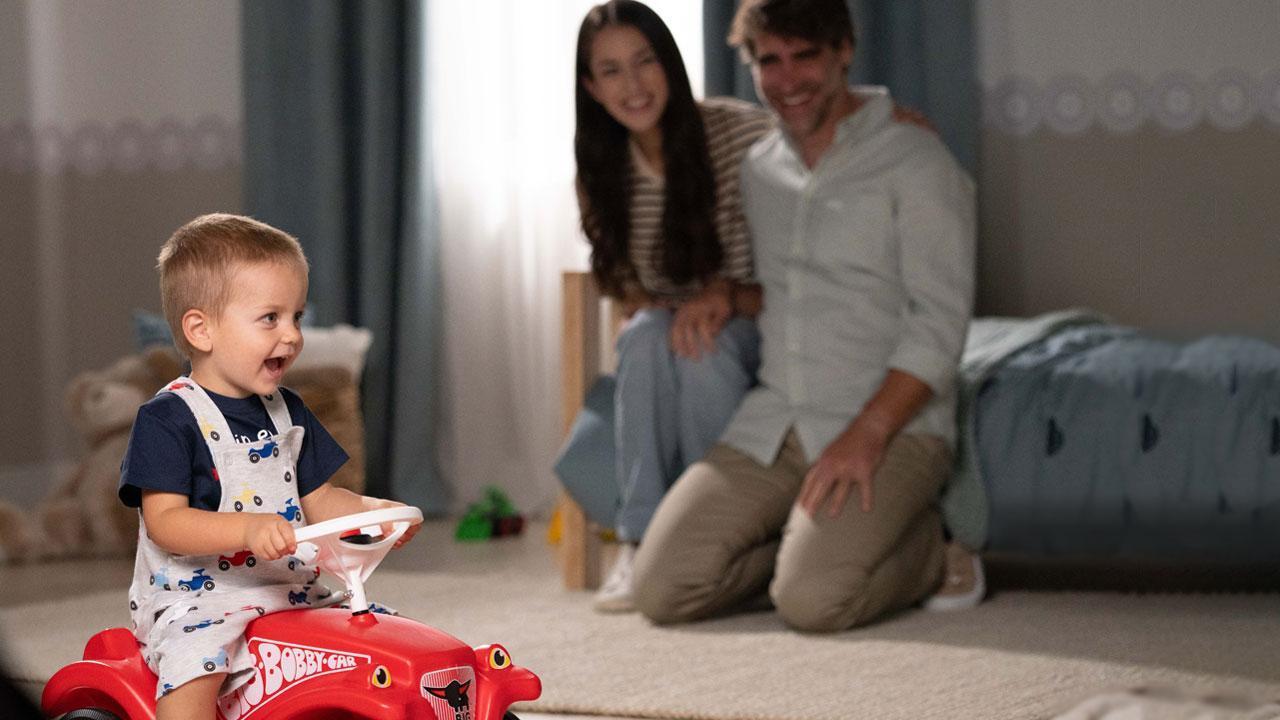
-
By
Vanessa M.
Encouraging children's feelings through play
The joy of a new toy, the disappointment of losing a card game, the fear of sliding for the first time, the surprise of unexpected game outcomes or the anger at the other player who doesn't stick to the agreed rules: When playing games, children experience the entire range of human emotions. Age-appropriate games promote the development of children's emotions accordingly and support the development of an understanding of their own feelings and the feelings of others. Through play, children learn how to deal with their emotions, express them and respond empathetically to others.
This article is all about emotional education and promoting children's feelings through play.
How to encourage children's emotions and feelings through play
In order to strengthen children's feelings, it makes sense to suggest suitable games and provide them with child-friendly toys in kindergarten and at home. Let's take a closer look at which games and toys you can use to discover, develop and discuss feelings with children:
Interactive games to strengthen emotional intelligence
Interactive activities and toys play a central role in the field of games to strengthen children's emotions. This is because games that get kids into action and invite them to play together with their peers or siblings offer many opportunities for emotional development.
The best example of this is role-playing games, in which kids change perspectives and slip into other roles.
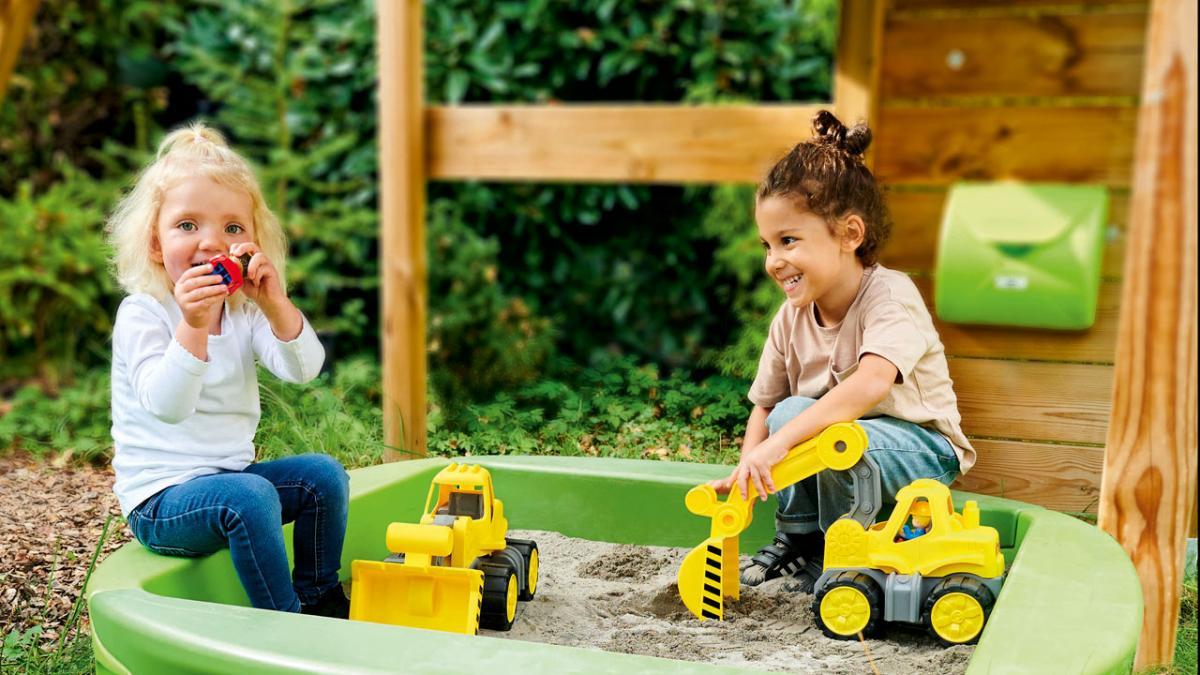
For example, if your child takes on the work of a construction worker and gets to work with the impressive Power Worker Midi excavator, they will experience the wonderful feeling of pride when they successfully dig a deep trench. On the other hand, they can learn to deal with frustration and anger when the mountain of sand they have laboriously piled up collapses.
Children's vehicles and outdoor toys can give children similarly valuable experiences with emotions. Outdoor activities make it easy for children to express their feelings naturally. Just imagine how many feelings children can experience when playing with a BIG Bobby Car. In a race against another child, your child will either experience a joyful victory or a sad defeat and learn to come to terms with it. By playing independently with the vehicle, they can explore their self-efficacy and independence and experience what it feels like to make progress without any outside help. Does your child have to share the vehicle with a sibling? Then children are bound to have strong feelings here too! The kids can deal with impatience and envy when it's the other one's turn to drive, feel a bond when exploring new routes together and, of course, experience what it's like to be really angry with each other.
Play figures are a classic among interactive toys that strengthen children's emotional experience by enabling them to project, name and talk about their feelings. Through play, children create their own worlds with emotionally charged stories and playfully test social skills such as empathy. These characters also offer children who are not yet able to express their emotions freely the opportunity to approach them in a playful way and initiate age-appropriate processing. This can be seen, for example, when a child who is jealous of their siblings claims certain play figures for themselves and strictly regulates which figures are allowed to interact with each other.
Creative games for processing positive and negative emotions
Developing, discovering and discussing feelings with children can be a creative process. After all, it is rarely effective to chew over children's strong feelings in theory. Exploring their own emotional world is made much easier through creative play that encourages the expression of emotions, allowing emotions to come to the surface in a natural way. So why not work on feelings while painting with children? It is not uncommon for the artworks that children create, if given free rein, to address what is going on inside them.
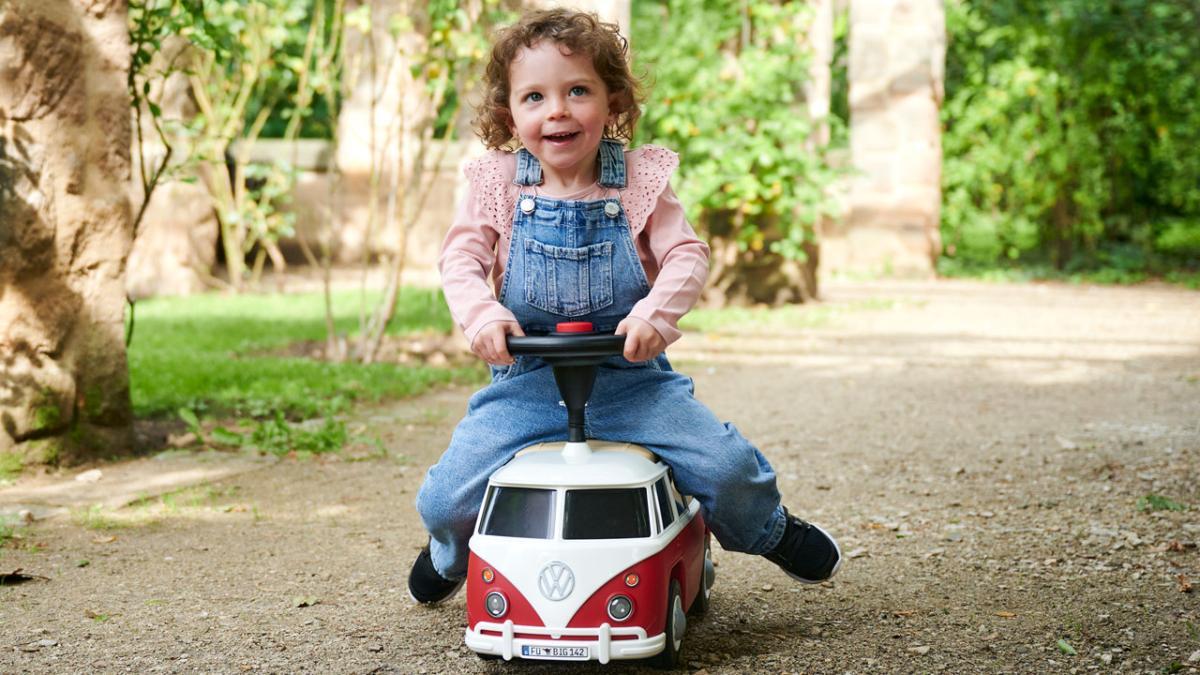
However, creative play to strengthen children's emotions does not necessarily have to have anything to do with painting and crafts. Sand and water games are also an excellent starting point for processing positive and negative emotions in children. The wide range of feelings that games with sand and water can evoke in children can be seen, for example, when playing with our sand and water shell. When creatively designing sand castles, sand cakes and the like, there is just as much joy over a successful shape as there is frustration over a collapsing castle tower or satisfaction with the accurately constructed moat. Most games with sand and water can be flexibly supplemented with other play elements. For example, your child could solve a possible water shortage in the shell not simply with a dull hose, but with the Power Worker Maxi fire engine with spray function, which moves into action. Then the sandpit creative play becomes a role-playing game that gives your child an impression of how heroes and heroines, as well as rescuers in uniform, might feel.
Expressing feelings through music and sounds
When it comes to expressing feelings in games for children, we must of course also talk about musical toys and toys with sound effects. After all, sounds and noises can awaken emotions in all of us and encourage us to express our feelings. Who hasn't felt their mood instantly lift when their favorite song is playing on the radio, been nostalgic at the sound of the sea or felt deep sadness when listening to a melancholy piano piece? For children, it doesn't have to be a profound piece of music for emotions to come into play. Realistic car sounds in particular arouse plenty of emotions in children who are enthusiastic about vehicles. When the Bobby Car Multi Sound steering wheel makes engine noises and horns sound, enthusiasm, excitement and fascination are not far away. At the same time, games with sounds train auditory perception and thus promote child development on several levels.
Climbing toys are other tools that promote children's emotional development by providing them with safe challenges that build self-confidence and independence. When climbing, children set goals and overcome fears, which supports a sense of self-efficacy. These positive experiences of overcoming challenges help children to develop resilience and enhance their emotional skills. Playing together on climbing toys, such as those from BIG Kraxxl, can also promote social interaction and teamwork skills as children learn to support each other and celebrate successes together.
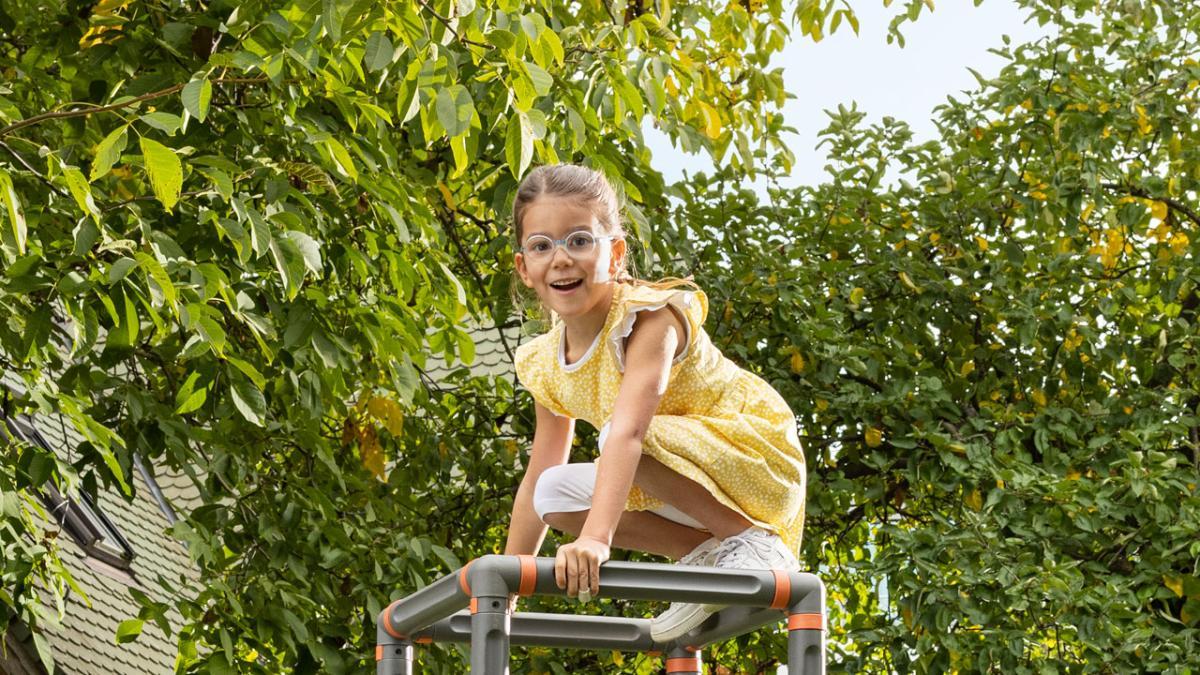
Learning from a model: why parents' handling of their feelings is just as important
Emotions play a huge role not only in children, but also in the lives of every adult. We have all had to learn how to deal with our emotions appropriately and some of us are still dealing with them today. As children are known to have excellent powers of observation and invariably take their parents as role models, they have a responsibility to set an example of how to deal with emotions in a healthy way. Whether you like it or not, parents play a key role in promoting emotional intelligence and resilience in their children. It is therefore incredibly important that they do not hide their emotions, but talk to their children about their feelings - in an age-appropriate manner, of course.
Fulfilling the role model function starts with small, everyday situations. Let's assume you're going on an outing with your child on a wintry Sunday morning. You've stowed the sledge in the trunk, wrapped yourself up tightly, brought a pot of tea and are ready for the winter adventure you've been looking forward to for days. But when you arrive at the only hill in the area that is suitable for sledging, you realize that there is not enough snow. Unfortunately, sledging won't be any fun and you are both understandably frustrated. The way in which you, as an adult, deal with the emotional situation does not change the actual situation, but serves as a basis for your child to learn how to deal with feelings. So instead of swearing, bottling up your anger and driving home in silence or slamming the car door in frustration, it's better to take a deep breath and calmly explain to your child what feelings are bothering you at the moment. Then you can think together about how you can make the best of the situation and what you can do to feel better. Experiences like this will teach your child "by example" how to behave the next time they are frustrated or angry.
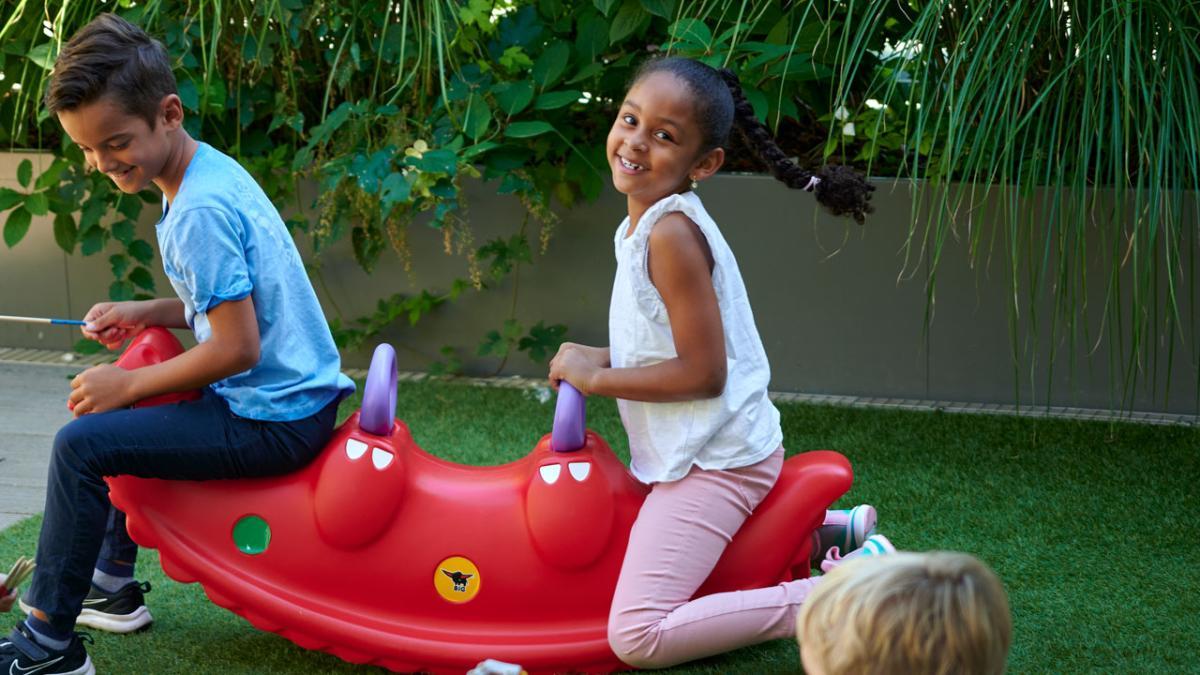
Conclusion: Learning to deal with emotions through play
Children who are encouraged at an early age to deal with their emotions, express them and empathize with the emotional world of others are very likely to grow up to be empathetic, emotionally intelligent and resilient adults. There is therefore no question that the importance of strengthening children's emotions should not be underestimated.
This starts as early as infancy and toddlerhood! Even the youngest children benefit from playing together with baby and toddler toys that help them to process their feelings. And even outside of play, you should of course support your child's emotional experience in an appreciative and attentive way from an early age so that they can develop healthily on an emotional level.
Are you looking for toys that are suitable for strengthening your child's emotions? Then the good news is that the BIG Shop is just a stone's throw away! There you will find original toys for outdoors and indoors that appeal (emotionally) to children of different age groups.

